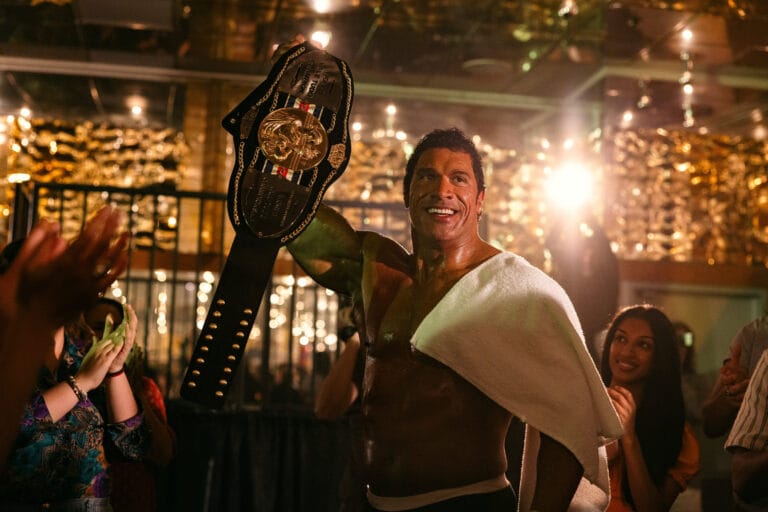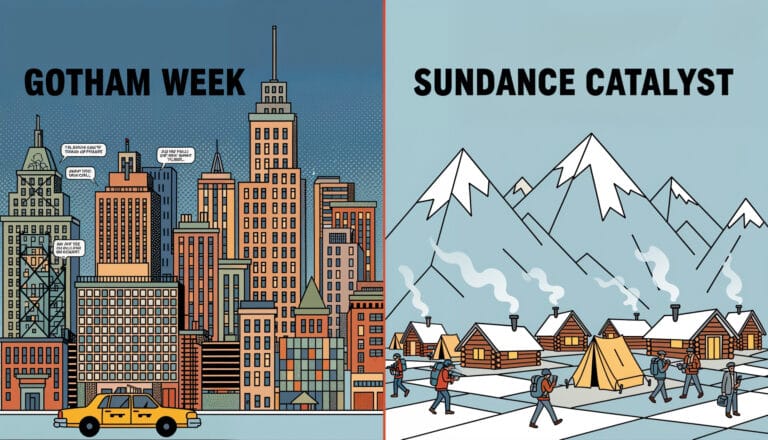A Personal Connection to Macau
When I heard Colin Farrell was starring in Ballad of a Small Player, I knew I had to watch it. Not just because of the stellar cast or Edward Berger’s direction — but because Macau holds a special place in my filmmaking journey. I’ve been there three or four times throughout my life, and the city has been remarkably lucky for me. My film The Passport won Best Cinematography at a festival in Macau, and more recently, a short film I directed and that we shot on a beautiful island near Shanghai — Kite — won Best Short Film at the Macau Children’s Film Festival.
Despite those trips, I never really had time to dive deep into Macau’s soul. I checked out the casinos, sure, but I didn’t see the same beauty I discovered in this film. Netflix’s adaptation of Lawrence Osborne’s 2014 novel takes you through several locations within Macau, revealing angles of the city I never experienced firsthand — a haunting vision of a disgraced lawyer spiraling through Macau’s glittering, decaying gambling underworld.
For someone who watches at least one movie per day for decades, getting surprised is increasingly rare. That’s where the beauty of human creativity shines — the ability to deliver interesting new points of view despite thousands of years of storytelling. Ballad of a Small Player is one of those films. With Colin Farrell leading and Berger directing, this Netflix production kept me wondering what would happen next — and that’s exactly the kind of movie I cherish.
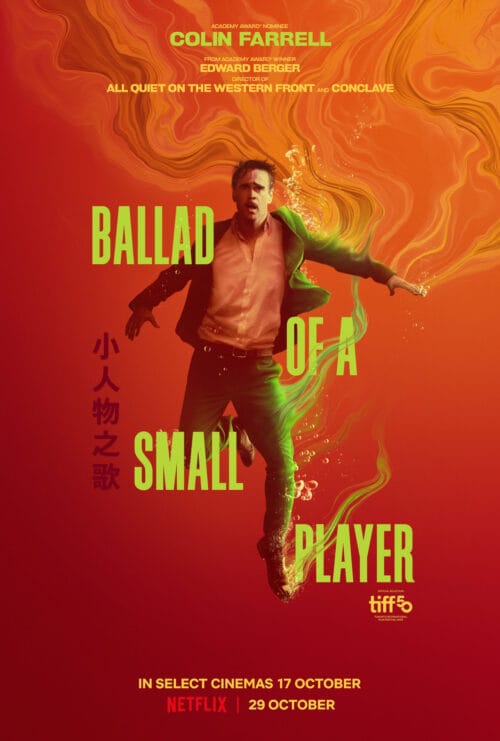
A High-Stakes Gamble for Redemption
At its core, the Ballad of a Small Player movie is a classic neo-noir — the story of a man running from his past and himself. Colin Farrell plays “Lord Doyle,” a disgraced English lawyer hiding out in Macau, trying to drown his sins at the baccarat tables. Each game becomes both a ritual of self-destruction and a desperate prayer for luck’s forgiveness. His world narrows to the casino floor, a place where fortunes and souls are lost in equal measure.
Osborne’s novel — and now Berger’s film — follows Doyle’s slow unraveling until he meets Dao-Ming, a mysterious woman who represents a fragile chance at redemption. This dynamic transforms the narrative from a gambling thriller into an emotional autopsy of guilt, greed, and fleeting grace. The film explores connections between greed, loss, second chances — even capitalism itself — in ways that resonated deeply with me.
Interestingly, Ballad of a Small Player already attracted top-tier talent long before the Netflix version. Tilda Swinton lent her voice to the 2014 BBC Radio adaptation, bringing a haunting, ethereal quality to Osborne’s world of sin and chance. Her involvement at the time signaled just how cinematic the material already was — and it’s fascinating to see the story now evolve from the airwaves to the screen, this time with Colin Farrell embodying its tortured lead.
The film’s premise places it in the lineage of psychological gambling dramas like The Gambler and Hard Eight. But Netflix’s backing suggests a visually rich, emotionally layered production, where the baccarat table isn’t just a game — it’s a mirror of the protagonist’s soul.
For filmmakers: stories like this are masterclasses in using external conflict to reveal inner struggle. Think of your film’s central setting as a metaphor for your character’s psyche.
Macau: The City as a Character
Few settings could serve this story better than Macau, a city suspended between eras. Once a Portuguese colony, it’s now a surreal blend of European architecture and towering casino lights — a living contradiction of wealth and ruin, faith and excess. It’s a city made for noir.
Having been to Macau myself, I can tell you there aren’t many films I can recall that were set in this city and showed such an interesting angle on it. Berger captures something I never saw during my visits — a vision that transforms familiar locations into something haunting and beautiful. The interplay of shadow, neon, and humidity turns every frame into a visual metaphor for moral ambiguity. Expect rich cinematography — smoky interiors, rain-soaked alleys, and cold casino glow — evoking films like In the Mood for Love or Drive.
Berger has the opportunity to make Macau as iconic as Ridley Scott made Los Angeles in Blade Runner. For filmmakers, Macau is a reminder that a setting should never be passive. It must influence the story. The environment shapes how characters act, feel, and see themselves. Before production, directors should explore their locations the same way a character explores their own conscience. AI tools like Google Flow + Maps for Cinematic Locations and Midjourney Mastery can help pre-visualize those moods, translating emotional tone into imagery before the camera rolls.
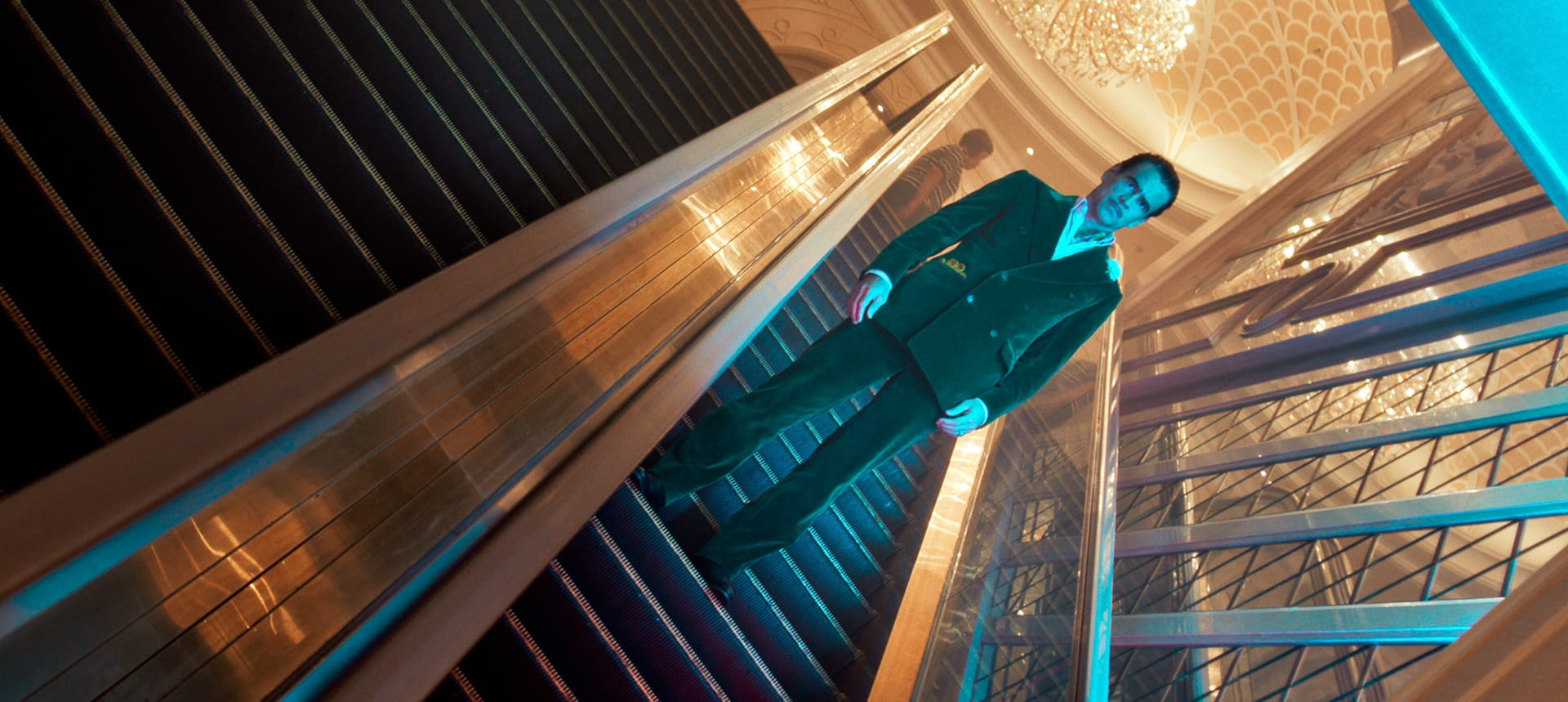
Why the Cinematography Stunned Me
My first major kudos goes to the cinematography, which I found absolutely stunning. Colin Farrell and the supporting actors deliver brilliant performances, but it’s the visual storytelling that elevates this film into something special. The art direction, the stylism, the wardrobe, the hair — everything was brilliant. Everything was great.
But what really fascinated me was the sound design. It became such a crucial part of the story. At one point, you travel from a casino suite to a cabin — two totally different locations. The actors have a special connection with that cabin, and just through sound, the film tells a very complicated story instead of showing it visually. This kind of precise storytelling is what separates good films from great ones.
Sound wasn’t just filling silence — it was transporting you between memories, locations, and emotional states. The way audio cues drive you back toward iconic previous locations that hold significance in the story demonstrates masterful restraint. Sometimes what you don’t show is more powerful than what you do.
For filmmakers: Study how sound design can carry narrative weight. Sometimes a well-placed audio cue reveals more about character psychology than dialogue ever could.
The Creative Team: A Perfect Match for the Material
The synergy between Colin Farrell and Berger feels almost fated. Farrell thrives in roles that demand vulnerability and darkness — In Bruges, The Lobster, The Banshees of Inisherin. He specializes in men haunted by choices they can’t undo. As Lord Doyle, he brings both magnetism and melancholy, fully inhabiting a character spiraling between self-destruction and hope.
Berger, meanwhile, is a director who knows how to weave human fragility into grand cinematic textures. In All Quiet on the Western Front, he captured chaos and intimacy in the same breath. Applying that precision to the neon claustrophobia of Macau is something electric — a film that feels both timeless and current. The entire cast delivers brilliant performances, with every supporting actor adding layers to this complex moral landscape.
For creatives, this collaboration is a case study in perfect pairing: a director whose visual philosophy complements an actor’s emotional language.
Lesson: when assembling your team, look beyond resumes. Seek emotional resonance between vision and performance — that’s where cinematic alchemy happens.

Why This Film Matters
In an era of endless content churn, Ballad of a Small Player stands out. It’s not chasing trends; it’s reviving the lost art of adult cinema — introspective, stylish, morally complex. Expect something between Michael Mann’s Heat and Paul Schrader’s The Card Counter, but with the lush melancholy of In the Mood for Love.
It’s about luck, guilt, and the illusion of escape. About how we gamble not for money, but for meaning. The film tackles greed, loss, second chances, and even capitalism in ways that feel both personal and universal. In a landscape dominated by spectacle, it’s refreshing to see Netflix betting on nuance — and with Colin Farrell leading the charge, that bet pays off spectacularly.
This is a movie I will cherish because of my special connection with Macau, but also because it demonstrates what cinema can achieve when craft, performance, and vision align perfectly.
Support Our Mission
Creating detailed film analysis like this and developing our creative projects takes dedication and resources. If you’ve found value in this review, consider supporting our work by checking out our unique clothing collections and merch. Every purchase directly helps us finance our film projects and continue publishing quality content for the creative community.
Internal Links for Filmmakers
- Craft cinematic concept art with our Midjourney Mastery Guide
- Learn to build Filmmaking AI Workflows for your next project
- Use Google Flow + Maps for Cinematic Locations to explore digital set design
- Check out Hero’s Essentials: Our Favorite Gear & Tools for the equipment we use in our filmmaking projects

Conclusion
Ballad of a Small Player could mark a defining moment for Netflix’s dramatic slate — a film where high-stakes tension meets poetic introspection. With Colin Farrell channeling wounded grace and Edward Berger behind the lens, this adaptation has all the ingredients of a modern classic.
It’s not just a gambling story — it’s a meditation on chance, fate, and the human need to start over. The film reveals angles of Macau I never experienced during my own visits, proving that great cinema can transform familiar locations into something entirely new.
Will luck save Lord Doyle, or finish him for good?
We’ll find out soon enough.
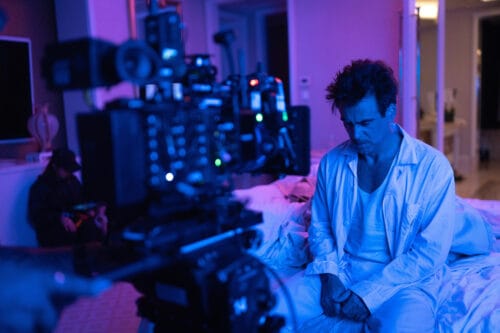
FAQ
When is the Ballad of a Small Player movie being released?
The film is currently available on Netflix.
What’s the original book about?
Lawrence Osborne’s 2014 novel follows a disgraced English lawyer hiding in Macau, where addiction and self-destruction blur with the seductive lure of luck.
Who’s behind the movie?
Actor Colin Farrell stars as Lord Doyle, with Edward Berger directing. The film is backed by Netflix and produced by a top-tier creative team.
Discover more from Olivier Hero Dressen Blog: Filmmaking & Creative Tech
Subscribe to get the latest posts sent to your email.







